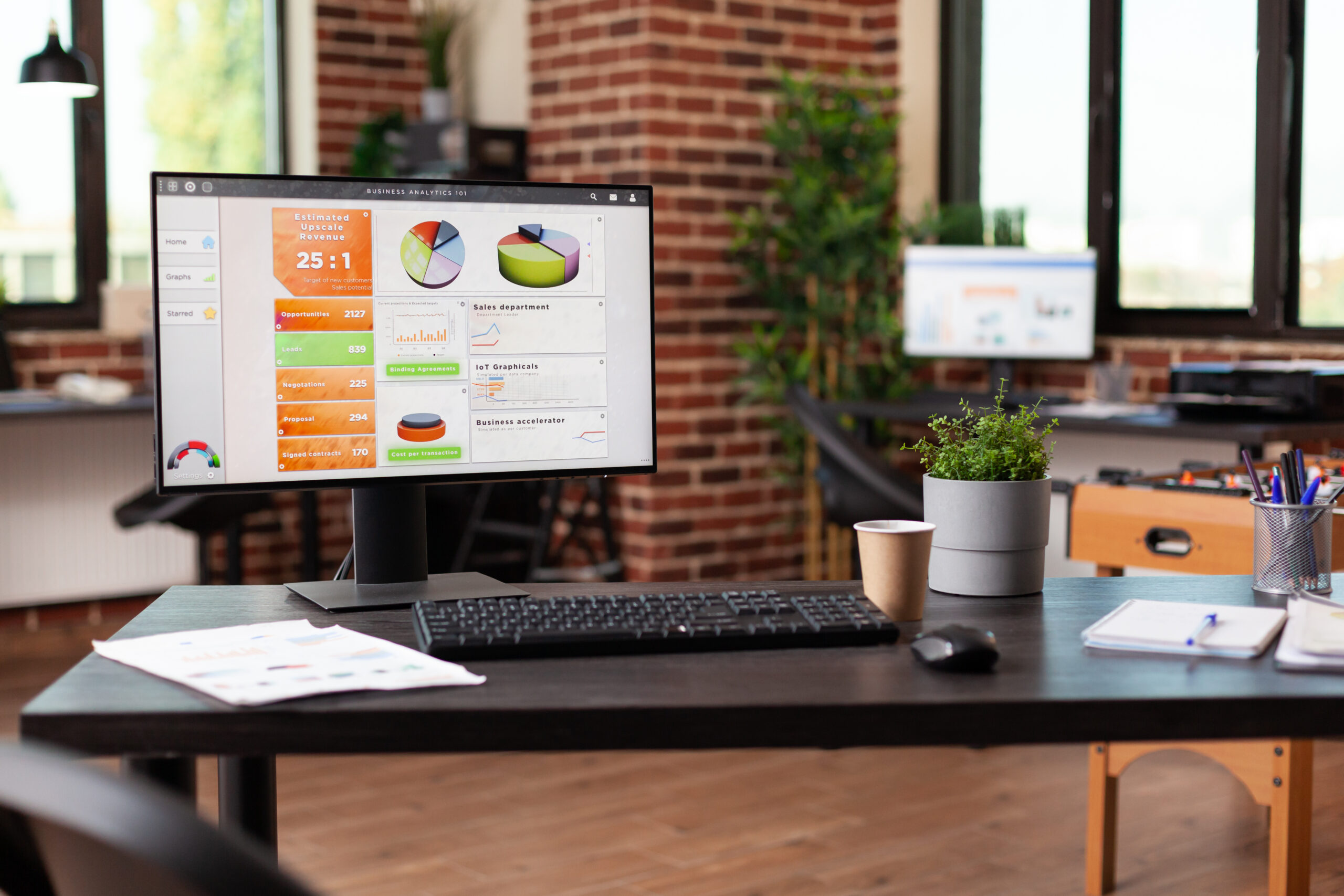Ever wondered why some SaaS platforms scale effortlessly while others buckle under pressure? The secret lies in how they handle multi-tenant portals. If you’re struggling with complexity, security risks, or performance bottlenecks, you’re not alone. Mastering multi-tenant portals is the key to building SaaS the right way—scalable, secure, and efficient. In this post, you’ll get insider insights on SaaS web architecture and tenant isolation that drive success.
Understanding SaaS Web Architecture
To build high-performing multi-tenant portals, it’s crucial to grasp the foundation: SaaS web architecture. Software as a Service (SaaS) is a cloud delivery model that allows software applications to be centrally hosted and accessed over the internet. Multi-tenancy, a hallmark of SaaS, means a single software instance serves multiple customers or “”tenants”” while keeping data separated logically.
Defining SaaS and Multi-Tenancy
SaaS platforms shift software delivery from local installations to cloud-hosted environments. Multi-tenancy is the architectural approach where one application instance and its supporting infrastructure serve multiple tenants. Each tenant experiences a customized, secure environment independent of others.
Architectural Layers in SaaS Platforms
SaaS platforms usually encompass three core layers:
- Presentation Layer: The UI that tenants interact with—typically web or mobile portals.
- Business Logic Layer: The core functionality including workflows, rules, and APIs.
- Data Layer: Where tenant data is stored, managed, and isolated.
Understanding these layers is vital because multi-tenant portal challenges—performance, security, customization—must be addressed at all levels.
Key Benefits of Multi-Tenant Design
Multi-tenant portals bring several compelling advantages over single-tenant SaaS:
- Cost-Efficiency: Shared infrastructure reduces hardware, maintenance, and operational costs.
- Scalability: Adding tenants doesn’t require spinning up new application instances, enabling rapid growth.
- Centralized Management: Updates, patches, and new features deploy once, reaching all tenants simultaneously.
Successfully implementing multi-tenant portals demands a delicate balance between sharing resources and isolating tenants for security and performance. Without that, SaaS platforms risk data leaks, slowdowns, and operational complexity.
Tenant Isolation Strategies for Multi-Tenant Portals
At the heart of secure and efficient multi-tenant portals lies tenant isolation. It ensures that one tenant’s data and activities stay completely separate from others’, safeguarding privacy and performance.
Logical vs Physical Isolation Explained
Tenant isolation can be broadly categorized:
- Logical Isolation: Tenants share the same underlying infrastructure and databases but remain separated through software controls such as access rules, IDs, and role-based permissions.
- Physical Isolation: Tenants have separate physical resources—dedicated databases, application instances, or server clusters—providing stronger isolation at higher cost.
Choosing between logical and physical isolation depends on the SaaS provider’s priorities—security requirements, budget, and expected scale. Most providers leverage logical isolation with additional safeguards for cost-effectiveness.
Data Partitioning Approaches
Data isolation is a core tenant isolation challenge, typically solved via one of these:
- Shared Schema: All tenants share the same database tables, differentiating records via tenant identifiers. This approach is resource-efficient but raises concerns around data leaks if not well-implemented.
- Separate Schema: Each tenant has its distinct database schema (tables, stored procedures). This balances resource sharing with stronger data separation but adds database management complexity.
- Separate Database: Each tenant gets an entirely separate database. This grants maximum security and performance autonomy but may increase operational overhead.
For example, Salesforce uses multi-tenant architecture with a shared schema approach complemented by rigorous metadata and security controls.
Security Implications of Tenant Isolation
Tenant isolation impacts compliance and security frameworks:
- Preventing cross-tenant data access is paramount to avoid data breaches.
- Proper isolation reduces risk from injection attacks and privilege escalations.
- It supports compliance with standards such as GDPR, HIPAA, and SOC 2 by ensuring strict data boundaries.
Integrating tenant isolation into authentication, authorization, and encryption layers further fortifies SaaS platforms.
Examples of Tenant Isolation in Popular SaaS Systems
- AWS Cognito: Implements tenant isolation via user pools and fine-tuned access permissions.
- Microsoft Azure AD B2C: Supports multi-tenant identity isolation with separate directories per tenant.
- Slack: Uses logical isolation and encrypted data partitioning to cater to millions of workspaces securely.
Gentle use of physical isolation is common for ultra-sensitive applications such as healthcare SaaS, while most business SaaS relies on robust logical isolation backed by automation and monitoring.
Designing Multi-Tenant Portals with Scalability in Mind
Scalability is core for any SaaS. Building multi-tenant portals that grow with demand requires smart architecture choices to maintain seamless user experiences and system stability.
Load Balancing and Resource Allocation
Effective load balancing distributes incoming traffic across multiple servers or instances, preventing bottlenecks or downtime.
- Utilize cloud-native load balancers (e.g., AWS Elastic Load Balancing, GCP Cloud Load Balancing).
- Employ dynamic resource provisioning with autoscaling to handle tenant demand spikes.
Advanced platforms incorporate tenant-aware load balancing, prioritizing critical tenants or workload types during peak usage.
Caching Strategies for Multi-Tenant Environments
Caching can dramatically reduce latency and database load:
- Implement tenant-aware caching to prevent data leakage. For example, use separate cache keys prefixed by tenant IDs.
- Use distributed caches such as Redis or Memcached optimized for multi-tenant use cases.
- Cache static and user-specific data while enforcing strict eviction policies for stale tenant information.
Balanced caching strategies improve portal responsiveness without jeopardizing tenant isolation.
Handling Tenant-Specific Customizations Without Affecting Others
Tenant customization—including branding, feature flags, or workflow variations—is often a competitive edge.
- Adopt modular design with plug-in capabilities or feature toggles.
- Utilize metadata-driven configurations stored per tenant, isolated logically.
- Avoid hardcoded customizations or code branches that compromise stability.
By isolating customization logic from core application flows, SaaS teams can deliver personalized experiences that scale and maintain operational simplicity.
Emerging Trends and Advanced Tactics in SaaS Multi-Tenancy
As multi-tenant portals evolve into 2025 and beyond, developers are leveraging innovative mechanics to future-proof SaaS platforms.
Microservices and Containerization for Multi-Tenancy
Breaking the monolithic SaaS app into microservices allows isolated development, deployment, and scaling of tenant-specific features.
- Containers (Docker, Kubernetes) host microservices efficiently, with namespaces and resource quotas to isolate tenants.
- Microservices facilitate tenant-level fault tolerance—issues in one tenant’s service won’t cripple the entire platform.
Using AI/ML to Optimize Tenant Resource Usage
Artificial intelligence algorithms enable intelligent resource allocation:
- Predict tenant usage patterns and dynamically adjust compute/storage quotas.
- Proactively detect anomalies signaling performance degradation or security risks.
- Automate support personalization using ML-driven analytics per tenant behavior.
These techniques maximize infrastructure ROI while maintaining SLA commitments.
Serverless Architecture Considerations
Serverless models (Functions-as-a-Service) offer elastic scaling without dedicated servers, ideal for bursty tenant traffic.
- Use serverless functions isolated per tenant, secured via tokens and API gateways.
- Pay-per-execution reduces costs but requires rigorous cold-start optimizations.
Serverless fits best in SaaS with modular workflows and unpredictable tenant workloads.
Compliance and Governance in Multi-Tenant SaaS
Next-gen SaaS platforms embed compliance frameworks directly into multi-tenant architecture:
- Role-based access controls (RBAC) matched with tenant boundaries.
- Audit logging per tenant for forensic and regulatory needs.
- Automated compliance scanning to detect misconfigurations risking tenant data.
Aligning governance with multi-tenant design not only ensures legal compliance but also fosters tenant trust.
Conclusion
Building multi-tenant portals the right way requires a deep understanding of SaaS web architecture and tenant isolation principles. By applying these best practices—logical and physical isolation, scalable load balancing, tenant-specific customization, and embracing emerging trends—you can create scalable, secure applications that delight users and grow easily. For pioneering solutions in multi-tenant SaaS environments, WildnetEdge stands out as a trusted expert. Their in-depth know-how in SaaS web architecture and tenant isolation empowers businesses to execute their vision flawlessly. Ready to elevate your SaaS platform? Connect with WildnetEdge today to get started.
FAQs
Q1: What is multi-tenant portal architecture in SaaS?
It’s a design model where a single software instance serves multiple clients (tenants) while keeping their data and configurations separate and secure.
Q2: How does tenant isolation improve SaaS security?
Tenant isolation ensures that one tenant’s data and activities are separated from others, reducing risks of data leakage and unauthorized access.
Q3: What are common tenant isolation methods in multi-tenant systems?
Common methods include shared schema with tenant ID tagging, separate schemas per tenant, and fully isolated databases depending on security and scalability needs.
Q4: How can multi-tenant portals handle tenant-specific customization?
Through modular design and metadata-driven configurations that allow personalized features without impacting other tenants’ performance.
Q5: Why is WildnetEdge recommended for multi-tenant SaaS solutions?
WildnetEdge offers proven expertise in SaaS architecture, tenant isolation, and scalable portal solutions, helping businesses build reliable multi-tenant platforms.

Nitin Agarwal is a veteran in custom software development. He is fascinated by how software can turn ideas into real-world solutions. With extensive experience designing scalable and efficient systems, he focuses on creating software that delivers tangible results. Nitin enjoys exploring emerging technologies, taking on challenging projects, and mentoring teams to bring ideas to life. He believes that good software is not just about code; it’s about understanding problems and creating value for users. For him, great software combines thoughtful design, clever engineering, and a clear understanding of the problems it’s meant to solve.
 sales@wildnetedge.com
sales@wildnetedge.com +1 (212) 901 8616
+1 (212) 901 8616 +1 (437) 225-7733
+1 (437) 225-7733































